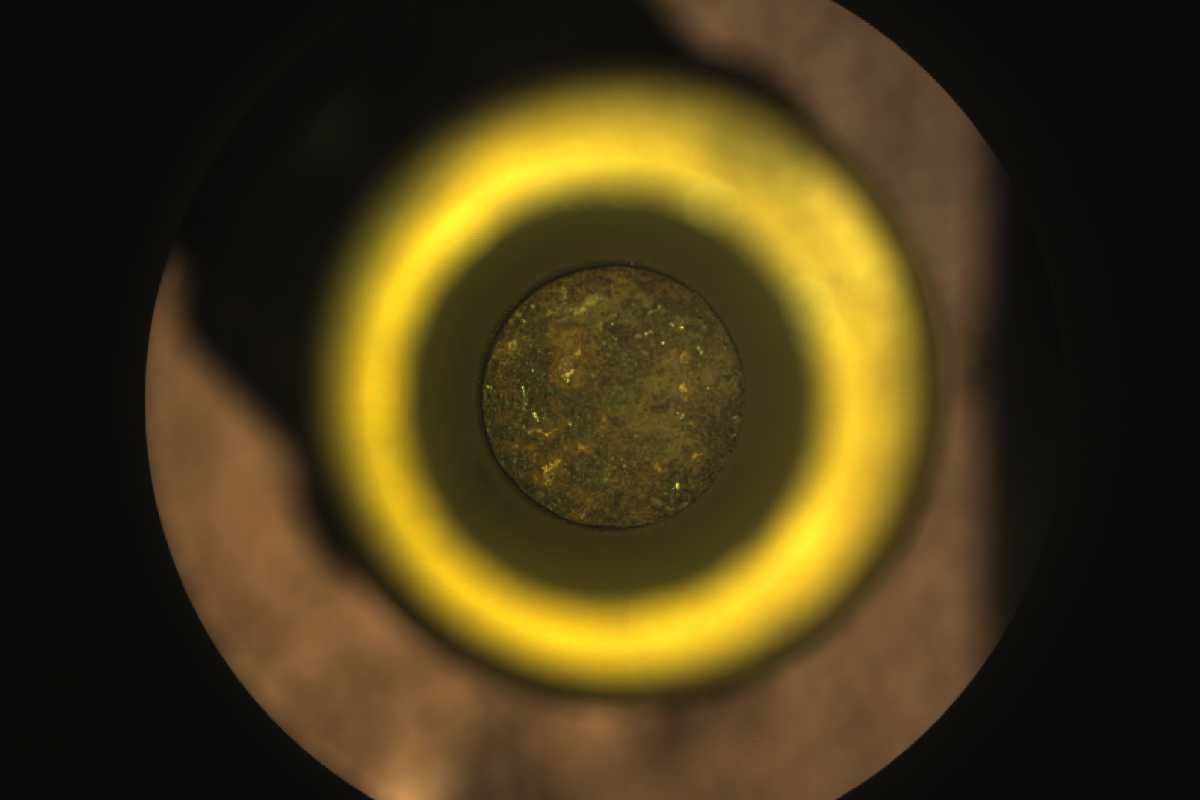
A historic moment; for the first time, materials have been carefully collected on another planet that will be brought to Earth at a later stage.
Last week you could already go on Scientias.nl read that Mars rover Perseverance – after a previous failed attempt (see box) – had again tried to sample a rock on Mars. Everything indicated that it had succeeded, but it was not entirely certain. But now that uncertainty has come to an end. The Mars rover not only managed to collect some material from the rock; it is now also safely stored inside the Mars rover.
Mars rover Perseverance landed on Mars in February and has been hunting for traces of (decayed) life ever since. In addition, Perseverance has another important task; the rover has to sample the red planet in different places. Those samples are then stored in airtight titanium tubes that will be picked up during future missions and then delivered to Earth. Perseverance made a first attempt at obtaining such a sample in early August. But that attempt failed. The rock Perseverance wanted to sample later turned out to be far too crumbly. The rock immediately disintegrated into powder and fine-grained dust, making it impossible to store it in the sample tube.
The monster that now rests safely inside Perseverance was obtained early this month. The rover used its two-meter-long robotic arm on which a rapidly rotating hollow drill is mounted. With that drill, the rover can collect drill cores that are just a bit thicker than a pencil. For the first sampling, NASA released the drill on a flat rock resting on the surface of Mars. The sample was stored in a tube, but before sealing that tube, NASA wanted to make sure that an intact sample had been obtained this time. Photos this weekend showed that was the case.
I’ve got it! With better lighting down the sample tube, you can see the rock core I collected is still in there. Up next, I’ll process this sample and seal the tube. #SamplingMars
Latest images: https://t.co/Ex1QDo3eC2 pic.twitter.com/gumqpmoXBW
— NASA’s Perseverance Mars Rover (@NASAPersevere) September 5, 2021
And today, the tube—which bears serial number 266—has been sealed and relocated to the rover’s interior.
Entire company
It may all sound pretty simple, but sampling a rock that rests several hundred million miles away, on another planet, isn’t that easy. “With more than 3,000 parts, the sample sampling and storage system is the most complex mechanism ever sent into space,” emphasizes Larry D. James, on behalf of NASA’s Jet Propulsion Laboratory. “The Perseverance team is excited and proud that the system is working so well on Mars.”
Analysis on Earth
Researchers eagerly await when this monster arrives on Earth. During future Mars missions – which NASA wants to set up together with the European Space Agency – the samples must be picked up and delivered to Earth. “By using the most advanced scientific instruments we have on Earth, we expect to make a wide range of breathtaking discoveries, including whether there has ever been life on Mars,” said Thomas Zurbuchen, on behalf of NASA.
More samples
It is hoped, however, that those future probes will not have to fly to Mars just for this one monster; In the coming months and years, Perseverance should collect even more monsters in other places. For this purpose, the rover is equipped with 43 tubes in which the same number of samples can be stored.
Jezero Crater
The monsters will be collected piece by piece in the huge Jezero Crater. Scientists are particularly curious about the samples collected in the delta area of the crater. This is the part of the crater where billions of years ago – when Mars was still wet and humid – a river flowed into a lake located in the crater. The ancient delta may still be rich in clay minerals, and researchers are eager to get their hands on it, as such minerals may harbor fossilized traces of microbial life and thus reveal whether Mars once harbored life.
Researchers have had pieces of Mars in their hands before, but they have always been Martian meteorites. However, thanks to Perseverance and later Mars missions, they can now look forward to carefully selected Mars samples that are also carefully and airtightly stored and thus arrive on Earth pristine. Some patience is in order; it is likely that the samples that Perseverance is now collecting will not be delivered to Earth until the beginning of the next decade.
Source material:
“NASA’s Perseverance Rover Collects First Mars Rock Sample” – NASA
Image at the top of this article: NASA / JPL-Caltech